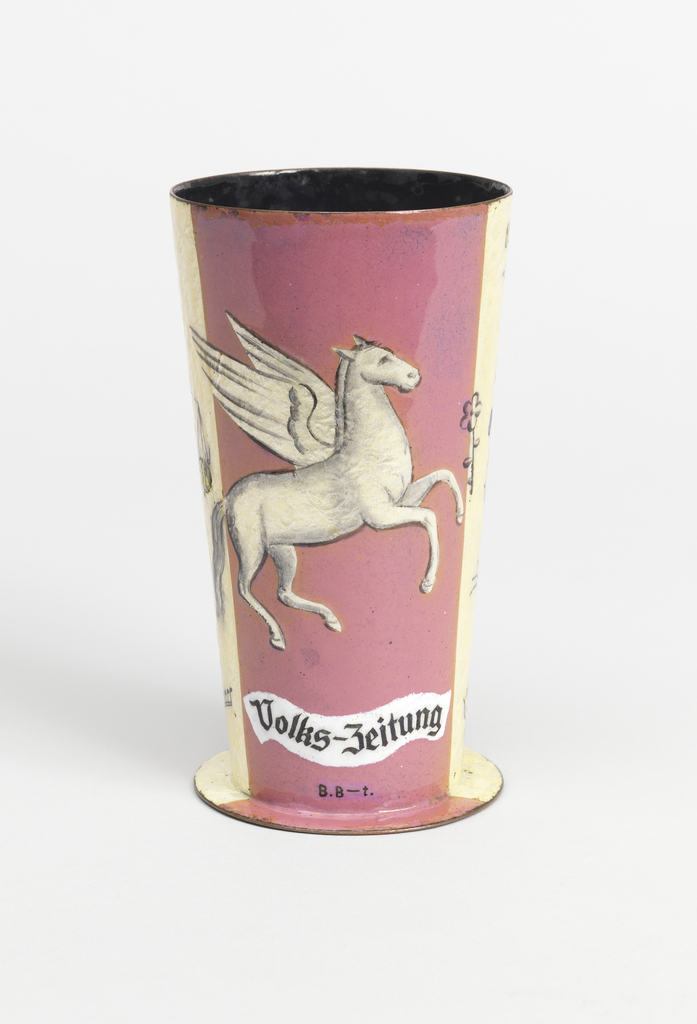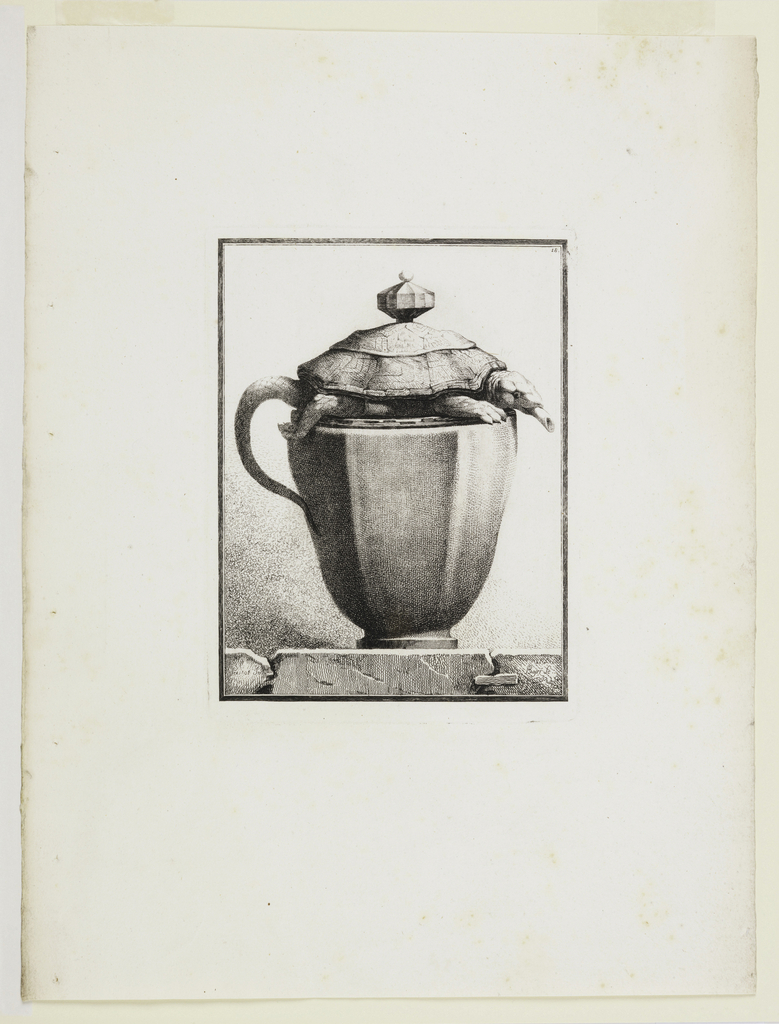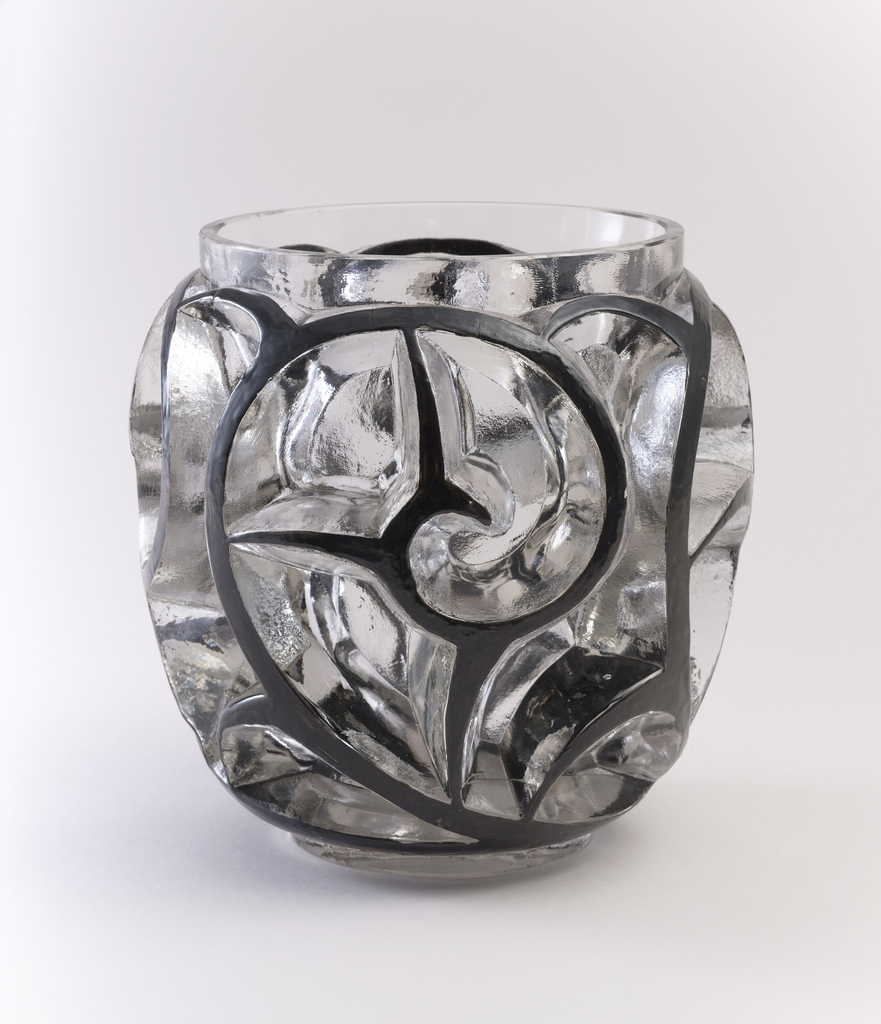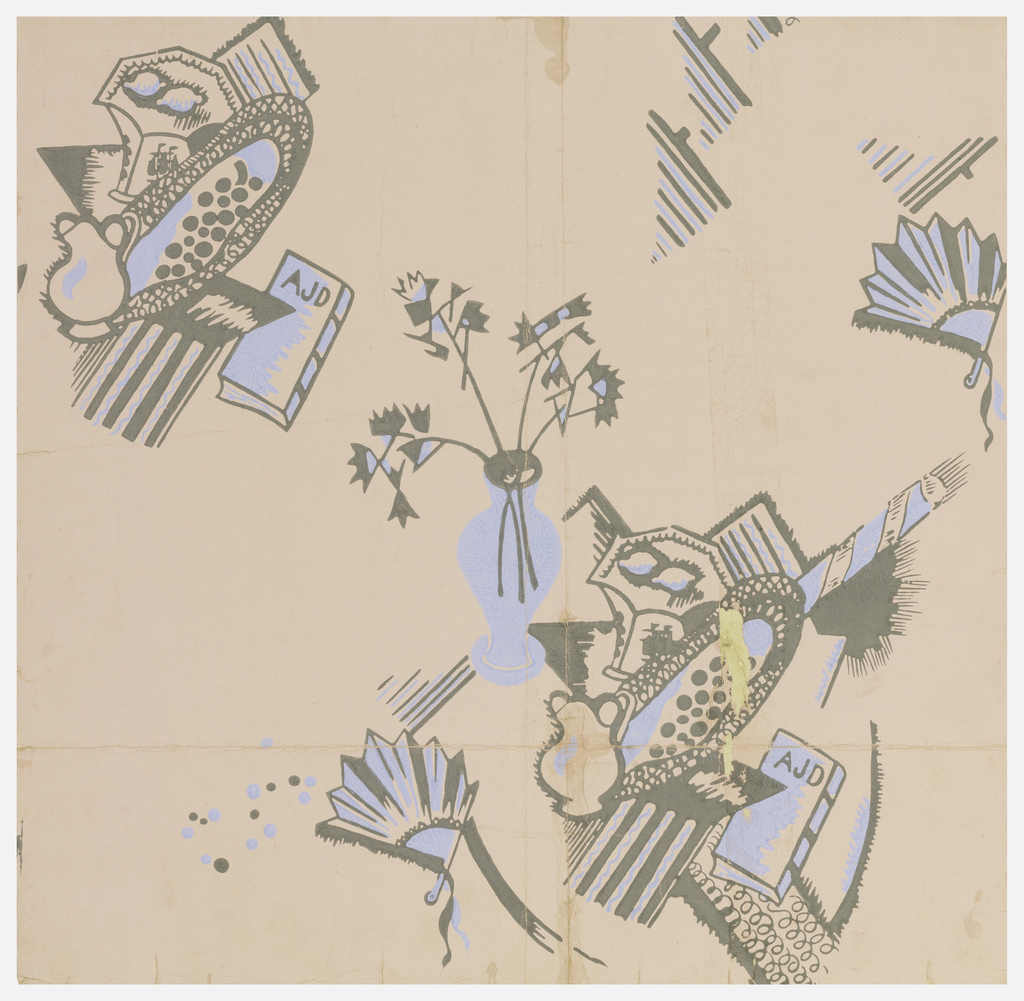This vase was designed and made by Hilda Jesser. Jesser attended the Kunstgewerbeschule (School of Applied Arts) in Vienna from 1914 until 1917 where she took classes with members of the Wiener Werkstätte whom she designed for from 1916 to 1921. During her time as a student at the Kunstgewerbeschule she primarily focused on fashion...
It may take a moment to figure out this eccentric vase design: is a tortoise sitting on a faceted plinth or are the two integrated into a single design? This eccentric print actually shows a vase, or an ewer with a lid shaped like a tortoise. Its mouth serves as the sprout, and its tail...
Born and raised in a creative atmosphere dedicated to decorative arts, Suzanne Lalique (1892-1989) was encouraged by her father René, the well-known designer of jewelry and glassware, to participate in the family enterprise. From 1920 to 1930, a large part of the Lalique glass production was inspired by her watercolors, that reveal her passion for...
Collections of miscellaneous objects in pale blue and gray are grouped in floating clusters on a ballet-pink background. In the lower right-hand corner of the panel, a paper fan floats towards a pile of shapes that I choose to interpret as a pitcher, an upside-down lampshade, a vase of flowers, some lemons, a book with...



